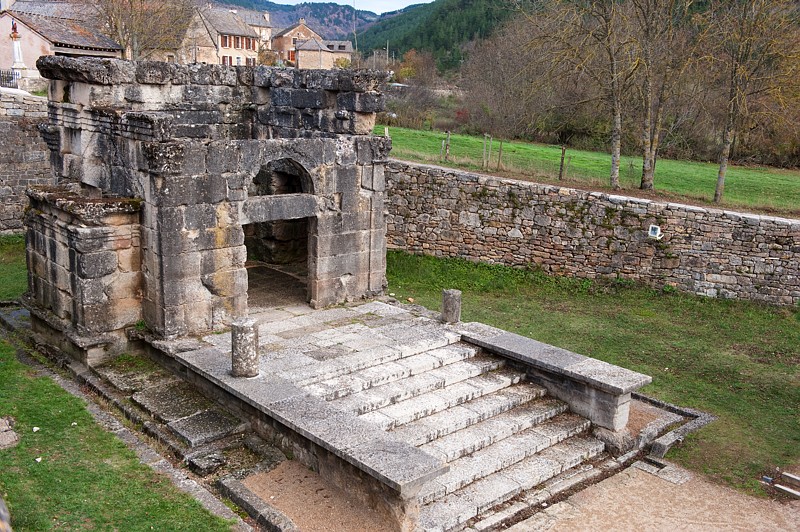
Gallo-Roman Mausoleum at Lanuéjols
The Lanuéjols Mausoleum bears witness to the existence of a Gallo-Roman estate in the Valdonnez area, north-east of Mont Lozère. It was built in the second half of the 2nd century in memory of two deceased sons of a rich family of Gabali land-owners, the Pomponii. The mausoleum can be seen today as you enter Lanuéjols, by the side of the road, as custom dictated: the Romans never buried their dead near dwellings, but always by the roadside.
The monument consists of a funerary chapel built on a raised site (podium) and is preceded by a colonnaded vestibule, which is accessed by a monumental staircase. Inside, two side niches can be made out, which were probably used for the deceaseds' sarcophagi, as well as a central niche, which likely contained statues. Decorations carved into the limestone are still visible.
Alongside the main tomb, two other edifices make up this funerary complex. The second monument might be an altar, around which funerary ceremonies would have taken place. The third might be the tomb of the parents of the two dead boys.
Its remarkable preservation makes this architectural masterpiece the second-best Roman funerary monument in France, after the one at Saint-Rémy-de-Provence.
A recommended continuation of your visit is the village of Lanuéjols with its limestone architecture and Romanesque church.
Practical informations
Open for unguided visits year-round.
Contact
Renseignements :
Office de tourisme Mont Lozère
Place de l'église - Le Bleymard
48190 Mont Lozère et Goulet
Tel : 04 66 47 61 13

